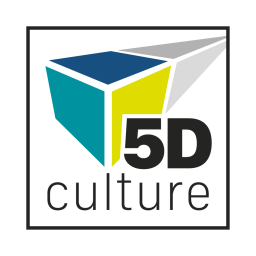Ever wondered what the buzz is all about with 3D digitization, cultural heritage, and tourism? Well, you're not alone. In a world where technology is evolving at the speed of light, it's essential to explore the exciting opportunities and intriguing challenges that lie at the intersection of these realms. The question on everyone's mind: When should you jump on the 3D train and embark on a journey that's changing the way we experience the world?
3D digital capturing technology is soaring to new heights, hand in hand with extended reality (XR) technologies like VR, AR, and MR. These innovations rely heavily on crafting photorealistic three-dimensional worlds and objects, blurring the lines between reality and imagination. While they initially found their niches in land surveying (for 3D digital capturing) and the gaming industry (for XR), things have taken an unexpected turn.
The turning point? The year 2020. The COVID-19 pandemic, ushering in lockdowns and a rapid shift towards digital communication, supercharged the adoption of 3D and XR technologies. Suddenly, these innovations weren't just for tech enthusiasts. They became the gateway to connection and exploration for Generation Z, the millennial cohort born around the turn of the century. These digital trailblazers sought human connection not only through social networks but also within the realms of computer games and the enigmatic Metaverse.
Enhancing the Traveler's Journey: 3D and XR in Tourism
The journey in tourism doesn't begin and end at the destination. It starts with the dream – the initial information, the inspiration, the recommendation, or the tempting offer. And it doesn't conclude when you board the plane home – great tourism providers strive to extend the connection, offering more even after your trip.
With 3D and XR technologies, the traveler's journey is getting a thrilling new dimension. Why leaf through mundane brochures or read monotonous itineraries when you can have a sneak peek of your destination in Virtual Reality? And once you arrive, why settle for historical narratives about ancient towns and villages when you can virtually step back in time, interact with historical figures, have fun, and, most importantly, learn? Are postcards, in the age of smartphones and ubiquitous internet access, now passé? It might be time for postcards to evolve, offering not just static images but gateways to Augmented Reality 3D models, allowing you to interact with and share 3D models on social media.
A 3D Future for Europe's Cultural Heritage
The cultural heritage of Europe is poised for a 3D digitization revolution, as the European Commission urges Member States to digitize by 2030 all monuments and sites at risk of degradation, as well as half of those frequently visited by tourists. This initiative is set to propel the collection of 3D assets from a mere 0.03% of Europeana's assets to a staggering 16 million 3D assets by 2030. This surge will spark a renaissance in the use of 3D across various domains, including cultural tourism.
Take
Arctur, a partner in the 5Dculture project, as an example. In Slovenia's "Digital Innovation of Cultural Heritage" initiative (2019-2022), over 100 units of Slovenian immovable cultural heritage were 3D digitized, resulting in more than 30 digitally enhanced cultural tourism experiences. Despite initial skepticism, the project has been a resounding success, yielding not only outstanding results but also fostering new skills, knowledge, and invaluable connections. Check out some of the fantastic outcomes in
this video or explore more than 100 3D models
here.
5Dculture: Leading the 3D Revolution
The 5Dculture project is at the forefront of the 3D digitization of cultural heritage and tourism, recognizing its immense potential. As the number of 3D models of cultural heritage in Europe is set to skyrocket, 5Dculture is developing tools and approaches to store, manage, and view 3D models online. We're taking web viewing to the next level, enhancing two viewers—one developed by Arctur in Slovenia and one by Inception in Italy—to offer solutions for both polygon 3D models with textures and Building Information Models (BIM). These tools will play a pivotal role in the future of tourism, which is moving towards platformization, where platforms will be the bridge between various 3D models and immersive tourism experiences. Could we even be on the brink of a "Netflix of Cultural Heritage," a platform for on-demand cultural heritage experiences?
Furthermore, the 5Dculture partners are crafting a use case focused on cultural tourism. Within this initiative, we aim to demonstrate how existing 3D models can be effortlessly integrated into various tourism scenarios by small providers, without the need for hefty investments. Stay tuned to our blog for more insights into this exciting use case.
When? Now!
So, when's the right time to hop on the 3D train? It's not a question of when but whether you're a leader or a follower. The most ambitious pioneers are already aboard. Join them—engage with 5Dculture and unlock the future of travel experiences!
Written by: Matevž Straus, Heritage+ Lead, Arctur d.o.o. (Slovenia)



